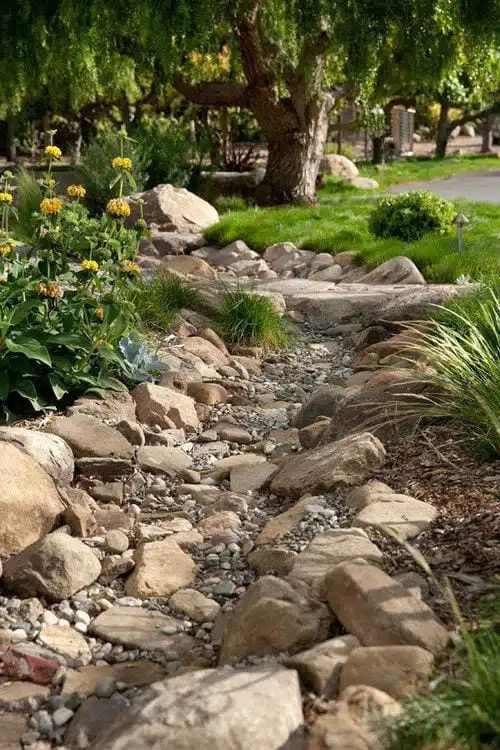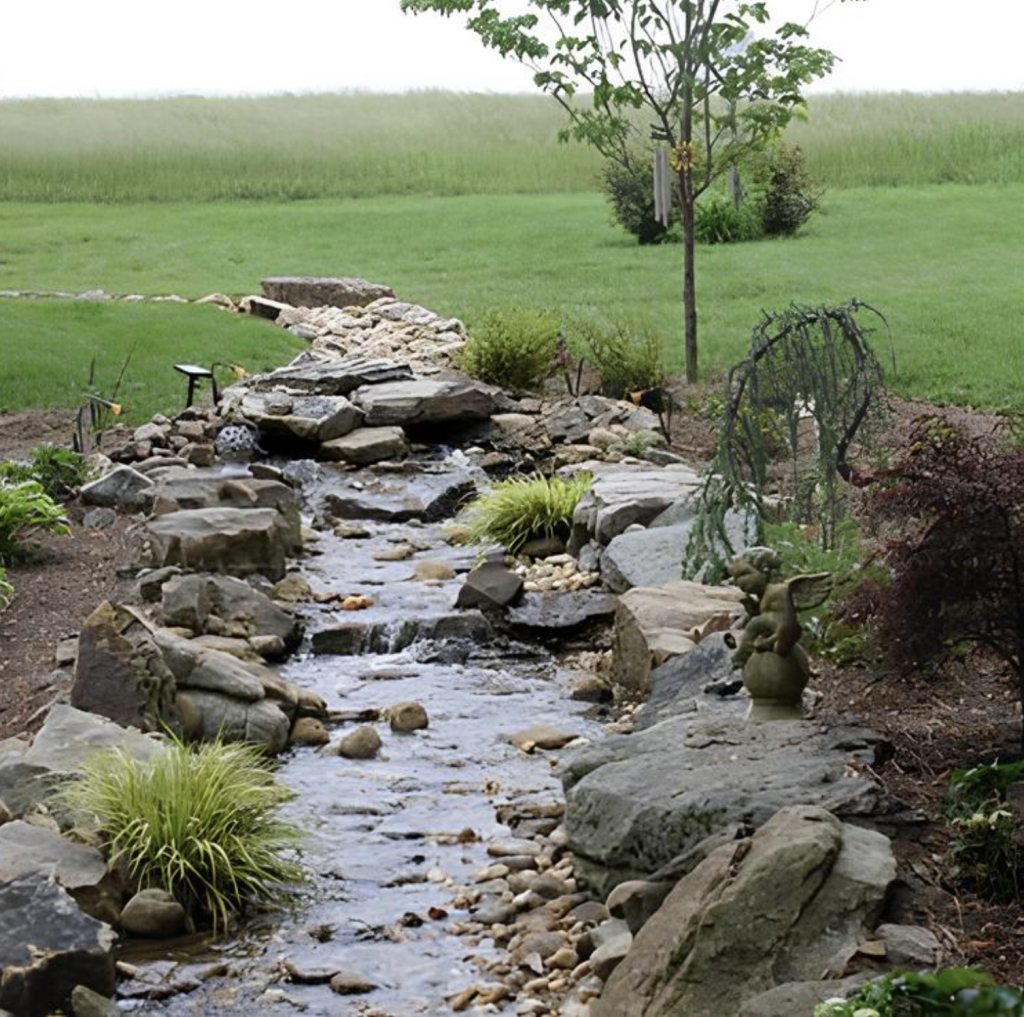Nature has a way of making landscapes as different as they are attractive, and a dry river bed is one of the strange landscapes it makes. But this word is not the only way to discuss these exciting parts of our world.
So, what do you call a dry river bed? In this article, we’ll go through language to look at the different names and synonyms for these interesting geographical formations found worldwide.
From arroyos in the dry Southwest of the United States to wadis in the Middle East, each word has a cultural and natural meaning that helps us learn more about these beautiful, dry places.
We’ll explore how landscaping with dry creek beds is crucial in creating functional and beautiful elements within garden designs, transforming these natural features into central aspects of your outdoor aesthetic.
What Do You Call a Dry River Bed?

1. Aroyo
In the southwestern part of the United States, especially in Arizona and New Mexico, dry river beds are often called “arroyos.” These dry pathways drain rainwater naturally, and during solid desert storms, they can turn into fast-moving rivers. The worm “arroyo” has a reliable connection to the culture and landscape of the American Southwest.
2. Wadi
In places where people speak Arabic like the Middle East and North Africa, dry river beds are called “wadis.” Wadis are often dry for long periods but can fill up quickly when it rains. It makes them essential sources of water and historical and cultural hubs. The word “wadi” makes you think of a river in a dry area.
3. Wash
In some places of the United States, mainly in the southwestern deserts, the word “wash” describes dry river beds or channels that sometimes have water after the rain. Washes are an excellent example of how desert ecosystems can change quickly from dry to complete for a short time.
4. Dry River Bed
The easiest and most helpful way to talk about “dry river beds.” This name fits well with how it looks for most of the year when no water exists. Dry river beds are standard in arid and semi-arid areas, where it doesn’t rain very often, and they are a great way to see how nature works.
5. Gully
Gully is another word that can be used for dry river beds, but it can also be used to talk about smaller channels or ravines that have been made by erosion. Gullies often have steep sides, and they may dry up during dry times. The word “gully” shows that these features were formed by erosion.
6. Coulee
Coulee is often used in the plains of Canada and parts of the north of the United States, especially in places where glaciers have moved. Coulees can be dry riverbeds or deep valleys eroded by water and wind. They are a sign of how geological forces shape our landscapes.
7. Nullah
In some parts of India and South Asia, a dry riverbed may be called a “nullah.” Most of the year, these canals are dry, but when the monsoons come, they can fill up with water and save places that depend on rainy water seasons. In the Indian region, the word “nullah” has a special meaning.
8. Seasonal River
In places where dry river beds sometimes flow during certain times of the year, the rivers are sometimes called “seasonal rivers.” This term refers to their water flowing in cycles, highlighting their role in the more extensive natural process.
9. Dry Stream
For smaller, less apparent streams, the word “dry stream” may mean water isn’t flowing now, but it can when it rains. Dry streams show how flexible it is, but it could be when it rains. Dry streams show how flexible nature is and how the amount of water available changes over time.
10. Dried Up River
Sometimes, the best way to describe a dry river bed is to call it a “dried-up river.” This term is precise and clarifies that there is no water in these routes and that watercourses change over time.
Conclusion
Dry river beds are called different things based on their location, local customs, and how common they are in a certain area. These words catch the essence of these interesting landscapes and show how important they are and how well they can adapt to changing conditions.
No matter what you call them, dry river beds are important parts of the natural world. They help handle water, stop erosion, and maintain ecological diversity. They also show how many different languages and cultures live on our planet.
As we keep learning about and appreciating the vocabulary of dry landscapes, we know more about our natural world and the many cultures that live alongside it.
Dry river beds, with all their different shapes and colors, are still fascinating examples of how strong and beautiful nature is.
Frequently Asked Questions
Can Dry River Beds Be Used to Make Front Yards Look Nicer?
Yes, dry river beds can greatly enhance landscaping in the front yard. They add a natural, one-of-a-kind touch to the design and make things look nice, which also helps with things like drainage and preventing damage.
Do All Dry River Beds Stay Dry All Year Round?
Only some dry river beds stay dry all year long. Some may temporarily fill with water after a lot of rain or during certain times of the year. Because these features get wet and dry at different times, they can change with the weather.
Can Wildlife Be Drawn to Dry River Beds in Landscaping?
Dry river beds can draw wildlife, especially where animals have learned to live in dry places. These traits may attract birds, insects, and even small mammals.

